- Home
- Components & Storage
- GPU & Video Graphics Device
- GPUs / Video Graphics Cards
GPUs / Video Graphics Cards
- In Stock
- Sold by Newegg
- AI Ready
- Make an Offer
- New
- Brands
- Show More
- Price
- Show More
- GPU
- Show More
- Chipset Manufacturer
- Memory Size
- Show More
- Cooler
- Show More
- Max GPU Length
- Features
- Form Factor
- Interface
- Show More
- Memory Interface
- Show More
- DisplayPort
- Show More
- HDMI
- Slot Width
- Recommended PSU Wattage
- Virtual Reality Ready
- Core Clock
- Memory Type
- Show More
- DirectX
- Show More
- Max Resolution
- Show More
- DVI
- Multi-Monitor Support
- CUDA Cores
- Show More
- Boost Clock
- Stream Processors
- Show More
- Low Profile Bracket Included
- Tensor Cores
- DLSS Support
- Ray Tracing Support
- Color
- All Top Brands
- Availability
- Condition
- Current Promotion
- Discount
- Sold by
- Useful Links
- New
Show More
- Customer Ratings
- & up
SHOP BY GPU
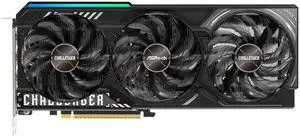
- Model #: RX9070XT CL 16G
- $649.99
- $599.99 –
- Save: 7%
- More options from $599.99 - $702.99
- Free Shipping

- Model #: PRIME-RTX5070TI-16G
- $808.99
- $749.99 –
- Save: 7%
- More options from $749.99 - $1,259.00
- $12.99 Shipping
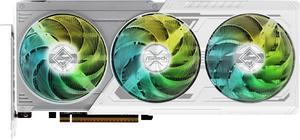
- Model #: RX9070XT SL 16G
- $669.99
- $619.99 –
- Save: 7%
- More options from $619.99 - $1,484.44
- Free Shipping
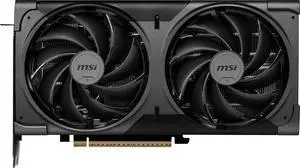
- Model #: RTX 5070 12G VENTUS 2X OC BLACK
- $559.99
- $499.99 –
- Save: 10%
- $479.99 after $20.00 rebate card
- More options from $499.99 - $659.76
- Free Shipping

- Model #: PRIME-RTX5070-12G
- $549.99
- $527.03 –
- More options from $527.03 - $1,182.22
- Free Shipping
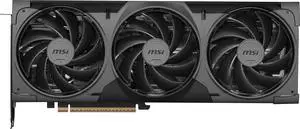
- Model #: RTX 5070 Ti 16G VENTUS 3X OC BLACK
- $819.99
- $749.99 –
- Save: 8%
- $729.99 after $20.00 rebate card
- More options from $749.99 - $928.01
- Free Shipping
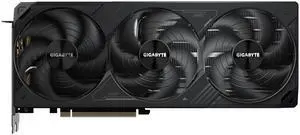
- Model #: GV-N5080WF3-16GD
- $999.99 –
- More options from $999.99 - $1,659.00
- Free Shipping
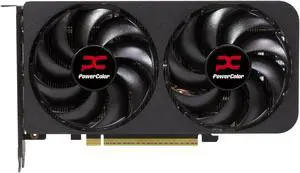
- Model #: RX9060XT 16G-A
- $370.99
- $349.99 –
- Save: 5%
- Free Shipping
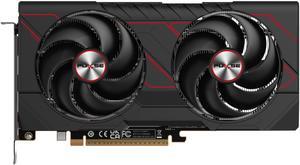
- Model #: 11350-03-20G
- $399.99
- $369.99 –
- Save: 7%
- More options from $369.99 - $599.99
- Free Shipping
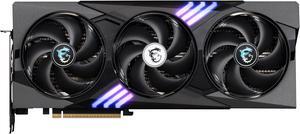
Forty Dollars off w/ promo code BFE2652, limited offer
- Model #: RTX 5070 TI 16G GAMING TRIO OC
- $969.99
- $839.99 –
- Save: 13%
- More options from $839.99 - $1,299.90
- Free Shipping
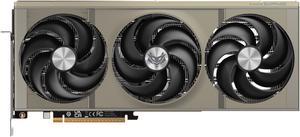
- Model #: 11348-01-20G
- $949.99
- $699.99 –
- Save: 26%
- More options from $699.99 - $1,269.90
- Free Shipping
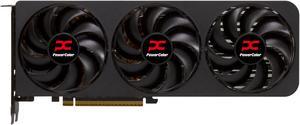
- Model #: RX9070XT 16G-A
- $710.49
- $599.99 –
- Save: 15%
- More options from $599.99 - $1,059.00
- Free Shipping

- Model #: RTX3060Ventus2X12GOC
- $317.99
- $299.99 –
- Save: 5%
- More options from $298.00 - $439.90
- Free Shipping

- Model #: RX-96TS316B7
- $379.99 –
- More options from $379.99 - $399.99
- Free Shipping

- Model #: GV-N507TWF3-16GD
- $808.99
- $749.99 –
- Save: 7%
- More options from $749.99 - $1,229.90
- Free Shipping

- Model #: RTX 5060 Ti 16G VENTUS 2X OC BLACK PLUS
- $439.99
- $419.99 –
- $399.99 after $20.00 rebate card
- More options from $419.99 - $518.25
- Free Shipping
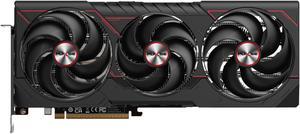
- Model #: 11348-03-20G
- $710.49
- $649.99 –
- Save: 8%
- More options from $649.99 - $1,513.37
- Free Shipping

- Model #: ZT-B50710J3-10P
- $794.99
- $749.99 –
- Save: 5%
- More options from $749.99 - $1,168.00
- Free Shipping
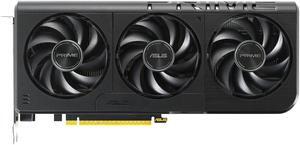
- Model #: PRIME-RTX5060-8G
- $299.99 –
- More options from $299.99 - $617.22
- Free Shipping

Get Monster Hunter Wilds - PC game with selected purchase, limited offer
- Model #: RX7900XTX PG 24GO
- $999.99
- $799.99 –
- Save: 20%
- More options from $799.99 - $1,259.00
- Free Shipping
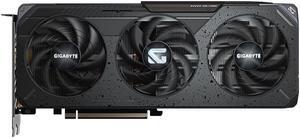
- Model #: GV-R9060XTGAMING OC-16GD
- $389.99
- $379.99 –
- More options from $379.99 - $599.00
- Free Shipping
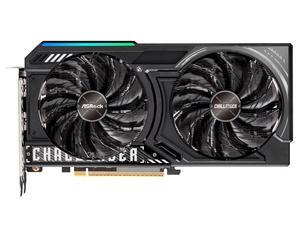
- Model #: RX9060XT CL 16GO
- $369.99
- $349.99 –
- Save: 5%
- More options from $349.99 - $463.53
- Free Shipping

Forty Dollars off w/ promo code BFE2676, limited offer
- Model #: GV-N507TWF3OC-16GD
- $789.99 –
- More options from $749.99 - $1,643.61
- Free Shipping
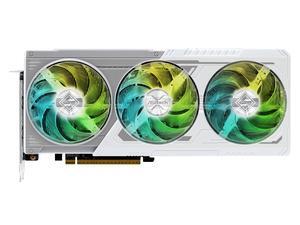
- Model #: RX9060XT SL 16GO
- $389.99
- $369.99 –
- Save: 5%
- More options from $369.99 - $579.00
- Free Shipping
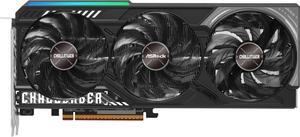
- Model #: RX9070 CL 16G
- $635.99
- $529.99 –
- Save: 16%
- More options from $529.99 - $929.00
- Free Shipping

- Model #: TUF-RTX5070-O12G-GAMING
- $599.99
- $579.99 –
- More options from $579.99 - $1,531.77
- Free Shipping
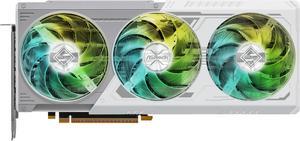
Ten Dollars off w/ promo code BFEFE234, limited offer
- Model #: B580 SL 12GO
- $269.99 –
- Free Shipping

- Model #: RX9070XT TC 16GO
- $729.99
- $679.99 –
- Save: 6%
- More options from $679.99 - $1,029.00
- Free Shipping
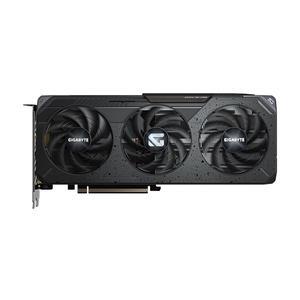
- Model #: GV-R9060XTGAMING OC-8GD
- $299.99
- $289.99 –
- More options from $289.99 - $641.44
- Free Shipping

- Model #: TUF-RTX5070TI-O16G-GAMING
- $849.99 –
- More options from $849.99 - $1,963.44
- Free Shipping
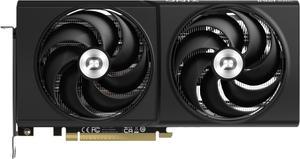
- $339.99
- $249.99 –
- Save: 26%
- Free Shipping
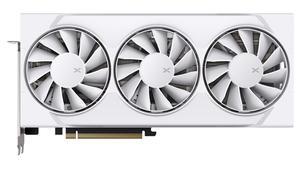
- Model #: RX-96TS316W7
- $399.99 –
- Free Shipping
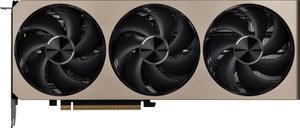
- Model #: RTX 5080 16G INSPRIE 3X OC
- $1,187.49
- $1,069.99 –
- Save: 9%
- More options from $1,069.99 - $2,798.44
- Free Shipping
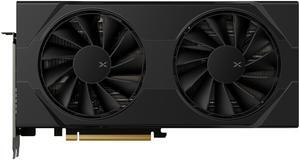
- Model #: RX-96TSW16BQ
- $379.99 –
- More options from $379.99 - $399.99
- Free Shipping

OUT OF STOCK
- Model #: ZT-B50800D2-10P
- COMING SOON
| Learn About Graphics Cards | |
|---|---|
Understanding Graphics Card Types for Optimal Display OutputGraphics cards, often called GPUs, transform CPU data into images on your screen. Today’s graphics cards have evolved from legacy VGA and DVI interfaces to modern HDMI 2.1 and DisplayPort 2.1, supporting 8K resolution, HDR, and 240Hz+ refresh rates. Gaming GPUs focus on frame rates and real-time ray tracing, while workstation cards excel in 3D rendering, CAD, and AI workloads. GPU vs Video Graphics CardGPU refers to the chip that performs the graphical computation, while the graphics card includes the GPU, memory, cooling system, and display outputs. Major chipmakers like NVIDIA, AMD, and Intel provide the core silicon. Board partners such as ASUS, Gigabyte, and MSI add unique cooling designs, RGB lighting, and factory overclocks. Key GPU Families
Ray Tracing and AI-Accelerated GraphicsModern GPUs use dedicated ray tracing (RT) and tensor cores to simulate realistic lighting, shadows, and reflections. Technologies like DLSS 4 and FSR 3.5 leverage AI to upscale images for smoother frame rates without compromising visual fidelity. Cooling, Power, and Size Considerations
Ensure your PC case supports the GPU’s size and airflow. Some flagship GPUs now measure 350mm long and occupy up to 3.5 slots. For power, use an 850W+ PSU with the new 12V-2x6 connector for RTX 50 Series GPUs. Calculate power needs with the Power Supply Calculator. | Types of Graphics Cards and Use CasesChoosing the right GPU depends on your needs. Here’s a breakdown of the main types and their ideal use cases:
Future of Graphics CardsThe next generation of GPUs integrates AI cores, better energy efficiency, and tighter CPU collaboration via technologies like NVIDIA NVLink 2, AMD Infinity Fabric, and Intel Deep Link. Expect smoother gaming, faster rendering, and stronger AI processing. Shop High-Performance GPUsDiscover Newegg’s vast selection of GPUs and video cards. From affordable upgrades to elite RTX and Radeon models, you’ll find exclusive Black Friday GPU Deals Upgrade to RTX 5090 / 5080 / 5070 Ti or Radeon RX 9070 at the lowest prices of the season. Buying Tips
Useful Tools and Buying Links
|
GPU / Graphics Card FAQs:
Does the RTX 5090 GPU support FP4 and DLSS 4 for AI performance?
Yes. RTX 50 Series GPUs such as the RTX 5090 are designed with next-generation tensor cores that support low-precision formats like FP4 along with DLSS 4. Together, these features can significantly accelerate AI inference, frame generation, and upscaling — as long as the game or application is coded to take advantage of them.
What is the real-world power consumption of the NVIDIA Blackwell GPUs?
Real-world power usage depends on the specific Blackwell model, board partner design, and workload. In gaming, Blackwell GPUs often draw less power per frame than prior generations thanks to better efficiency, but heavy ray tracing or compute jobs can still push them close to their rated total board power. Checking independent reviews that log system wattage in games and creator apps is the best way to see realistic numbers for your use case.
How does the RTX 5080 compare to the RX 9070 XT when gaming at 4K?
Both GPUs target high-end 4K gaming, but they emphasize different strengths. RTX 5080 cards typically excel in ray-traced titles and DLSS 4-supported games, while RX 9070 XT can offer strong raw raster performance and competitive pricing. Your best option at 4K will depend on the specific games you play, whether you use ray tracing, and how much you value DLSS versus FSR upscaling features.
Is the performance jump from Ada Lovelace to Blackwell worth the upgrade?
The upgrade from Ada to Blackwell can be meaningful if you play at 4K, lean on ray tracing, or rely on AI-enhanced features like DLSS 4 and advanced tensor operations. However, if you already own a powerful Ada card and game mostly at 1080p or 1440p without heavy ray tracing, the gains may feel more incremental. Consider your current GPU, resolution, and whether the new features justify the cost for your setup.
Should I buy a GPU now or wait for 2026 models?
If your current GPU struggles with the games or applications you use today, upgrading now can provide an immediate quality-of-life improvement — especially during major sales events. Waiting for future generations makes more sense if your performance is still acceptable and you expect larger architectural changes or price drops. In practice, it is often best to buy when you genuinely need the performance and can find a good deal on a card that meets your 3–5 year needs.
Is 12GB VRAM enough for ray tracing and AI workloads?
For 1080p and many 1440p games with ray tracing, 12GB of VRAM can still be adequate, especially when upscaling is enabled. However, some modern titles at max settings, 4K resolution, or with heavy texture packs can exceed 12GB, which may cause stutters or reduced settings. For serious local AI work, high-resolution content creation, or long-term headroom, choosing a card with 16GB or more VRAM is the safer option.
Do I need to uninstall old drivers before installing a new GPU?
When upgrading within the same vendor (for example NVIDIA to NVIDIA), you can usually install the latest driver over the existing one or use a clean install option in the driver installer. If you switch vendors, such as moving from AMD to NVIDIA or vice versa, it is a good idea to fully remove the old drivers first using the vendor tools or a utility like DDU in safe mode to avoid conflicts and leftover files.
Will an 850W power supply be enough to run the RTX 5090?
An 850W power supply can be sufficient for many RTX 5090 builds, especially if you use a modern, high-quality PSU and a midrange CPU without heavy overclocking. However, systems with high-core-count processors, lots of drives, or aggressive overclocks may benefit from a 1000W unit. Always check the GPU manufacturer’s wattage recommendation and consider using a PSU calculator to validate your full system configuration.
Are there any overheating issues reported with the RTX 5090?
High-end GPUs like the RTX 5090 naturally run warm under load, but board partners design large heatsinks, vapor chambers, and multi-fan coolers to keep temperatures within spec. Widespread overheating issues are uncommon when cards are used in cases with adequate airflow and correct power connections. If you see unusually high temperatures, it is worth checking case ventilation, fan curves, and whether your particular model has any known issues in user reviews or support forums.
How quiet or loud is this card under load?
Noise levels vary significantly between models. Triple-fan, open-air coolers with larger heatsinks are generally quieter because they can move more air at lower RPMs, while compact or blower-style cards tend to be louder. To understand how noisy a specific GPU is under gaming or rendering loads, check decibel measurements and user impressions in professional reviews, and consider adjusting the fan curve for a balance of temperature and acoustics.
What cooling technology does this GPU use to handle high temperatures?
High-end GPUs typically rely on large heatsinks with multiple heatpipes or vapor chambers, paired with two or three axial fans. Some premium models add hybrid or AIO liquid cooling for even lower temperatures and noise. The exact technology differs by brand and series, so checking the product photos and specifications will show whether the card uses standard air cooling, vapor chamber designs, or integrated liquid cooling solutions.
Does this graphics card support multi-monitor 8K output?
Support for multi-monitor 8K setups depends on the card’s display outputs and the display standards they implement. Many high-end GPUs feature HDMI 2.1 and DisplayPort 2.x, which can drive 8K displays, but bandwidth limits may restrict the number of 8K screens or refresh rates. For precise capabilities, confirm the maximum resolution and refresh rate per port in the specifications and match them to your monitors’ requirements.
Is this GPU compatible with the latest PCIe 5.0 motherboards?
Yes. Consumer GPUs are physically compatible with PCIe x16 slots, and PCIe standards are backward and forward compatible. A PCIe 4.0 or 3.0 GPU will work in a PCIe 5.0 slot, and vice versa, as long as the slot is mechanically x16 and wired correctly. Bandwidth may be limited to the lowest shared version, but for gaming and most desktop workloads this rarely impacts performance noticeably.
How does the RTX 5070 Ti compare to the RX 8800 XT in AI workloads?
NVIDIA’s RTX 5070 Ti benefits from mature CUDA, Tensor cores, and broad support across AI frameworks, which often gives it an advantage in consumer AI workloads such as Stable Diffusion, video upscaling, and many local inference tools. RX 8800 XT can perform well in GPU-compute tasks, especially when software is optimized for AMD, but overall ecosystem support for AI is still stronger on NVIDIA. For heavily AI-focused use, the RTX option is usually favored.
Which GPU performs better in UE5-based games?
Unreal Engine 5 titles are demanding, especially when features like Lumen and Nanite are fully enabled. GPUs with strong ray tracing performance, high memory bandwidth, and effective upscaling solutions tend to fare better. In many UE5 games, NVIDIA cards can lead when ray tracing and DLSS are enabled, while AMD cards often offer very competitive performance in pure raster workloads using FSR. Looking at per-title benchmarks is the most reliable way to determine which card performs better in the UE5 games you care about.
What are the efficiency differences between NVIDIA Blackwell and AMD RDNA4 GPUs?
Both Blackwell and RDNA4 aim to improve performance per watt versus their predecessors, but actual efficiency depends heavily on the specific model, board power limits, and workload. Some games will favor NVIDIA’s architecture and power management, while others run more efficiently on AMD’s RDNA4 design. Independent reviews that show performance per watt or frames per watt across a suite of titles are the most objective way to compare efficiency between the two families.
Is now a good time to upgrade from an RTX 3080?
Upgrading from an RTX 3080 can make sense if you want smoother 4K performance, higher frame rates with ray tracing, or access to newer features like DLSS 4 and expanded VRAM capacity. If you play mostly at 1080p or 1440p without heavy ray tracing and are satisfied with current performance, you may not see the upgrade as essential. Consider your target resolution, refresh rate, and whether there is a specific game or workflow that feels limited on your 3080 before deciding.
Should I buy a GPU with more VRAM or higher clock speeds?
For long-term gaming and content creation, VRAM capacity often matters more than small differences in core clock speeds. Extra VRAM helps avoid stutters and texture pop-in at higher resolutions or with heavy texture packs, while modest clock variations usually translate into relatively small performance changes. If you play at 4K or plan to keep the card for many years, prioritize sufficient VRAM first, then choose the fastest core configuration within your budget.
Is a water-cooled GPU worth it for heavy gaming?
A water-cooled GPU can deliver lower temperatures and quieter operation, which is attractive for long gaming sessions, compact cases, or overclocked builds. However, these models are more expensive and introduce additional complexity compared to air-cooled cards. If your case has good airflow and you are comfortable with slightly higher fan noise, a high-quality air-cooled GPU is usually sufficient. Water-cooling becomes most worthwhile when you prioritize acoustics and thermals above simplicity and cost.
How do I optimize GPU fan curves for quieter performance?
Most vendors provide software that lets you edit the GPU fan curve. To reduce noise, you can keep fans at lower speeds at light to moderate temperatures and ramp them up more gradually as the GPU approaches 70–80°C. After adjusting the curve, stress-test a few games to confirm that temperatures remain within safe limits and that the noise levels match your preferences. Good case airflow helps you run gentler fan curves without overheating the card.
How do I connect a GPU to multiple power cables safely?
Always follow the power connector guidance from both the GPU and PSU manufacturers. For high-end cards that use 12V-2x6 or multiple 8-pin connectors, it is best to run separate PCIe power cables from the PSU to each required connection rather than heavily daisy-chaining splitters. Make sure each connector is fully seated and avoid bending adapter cables sharply near the plug to reduce strain and heat buildup at the connection point.
What settings should I disable to avoid GPU bottlenecks?
If your GPU is maxed out and frame rates are too low, you can ease the bottleneck by reducing resolution or disabling the most demanding graphics options. Lower or turn off heavy ray tracing, extreme anti-aliasing, ultra textures, and intensive post-processing effects like motion blur or depth of field. Enabling DLSS, FSR, or other upscalers at a quality mode can also help, allowing you to keep good image quality while reducing GPU load.
Are coil whine issues common on this GPU model?
Coil whine is not unique to a specific GPU model and can vary from one individual card to another, even within the same product line. Some units may emit a noticeable high-pitched sound under very high frame rates or load, while others remain nearly silent. Coil whine is generally harmless, but if it is distracting you can try enabling frame rate caps or V-Sync to reduce it, and consult your retailer or manufacturer if the noise is extreme and bothersome.
Has this graphics card had any driver stability complaints?
Driver stability improves over time as vendors release updates and hotfixes. Early in a product’s life cycle, you may see more user reports about bugs or crashes that are later resolved. To evaluate the current state, review recent driver release notes, community feedback, and professional testing for this GPU. Keeping your system BIOS, chipset drivers, and GPU drivers up to date is important for minimizing crashes and compatibility issues.
Do users report VR performance issues with this GPU?
High-end GPUs generally handle VR well, but performance depends on the headset resolution, refresh rate, and how demanding your VR titles are. Some users may report issues if settings are pushed too high, motion reprojection is not configured, or drivers are outdated. For the best VR experience, keep GPU drivers current, follow headset vendor recommendations, and tune in-game settings or supersampling levels until frame times stay within the target threshold for your headset’s refresh rate.
Bestselling GPUs / Video Graphics Cards Reviews:
“ After waiting a long time to get my hands on the latest GPUs, but striking out due to a lot of them being way above MSRP and out of stock. ”
MSI Ventus GeForce RTX 3060 12GB GDDR6 PCI Express 4.0 Graphics Card RTX 3060 Ventus 2X 12G OC“ I'd recommend this card to anyone looking for a decent deal in 2025 and not willing to pay more than for a fantastic GPU. ”
SAPPHIRE Radeon RX 7900 XT 20GB GDDR6 PCI Express 4.0 Graphics Card 21323-01-20G“ Although this card is older than the current generation of GPUs, Its hardware specs are still supreme and the cost to performance is about the same for half the price of 40-50 series currently. ”
SAPPHIRE NITRO+ Radeon RX 7900 XTX 24GB GDDR6 PCI Express 4.0 x16 ATX Graphics Card 11322-01-40G“ AMD GPUS at this price range are a better deal ”
GIGABYTE WINDFORCE GeForce RTX 4070 12GB GDDR6X PCI Express 4.0 x16 ATX Graphics Card GV-N4070WF3OC-12GD“ The RGB is crisp and accurate (something I feel is lacking in a lot of GPUs) matching my corsair RGB perfectly, plus I do not need to install software to use it. ”
SAPPHIRE NITRO+ Radeon RX 7900 XTX 24GB GDDR6 PCI Express 4.0 x16 ATX Graphics Card 11322-01-40G“ With the new generation of gpus coming out, I think it's a personalized decision whether to still buy this card at around. ”
SAPPHIRE NITRO+ Radeon RX 7900 XTX 24GB GDDR6 PCI Express 4.0 x16 ATX Graphics Card 11322-01-40G“ Overall, maybe not a worthwhile upgrade from the previous generation AMD gpus unless you're needing all the extra power you can get, and also want to stay AMD or have other reasons such as I did. ”
ASRock Challenger Radeon RX 7800 XT 16GB GDDR6 PCI Express 4.0 x16 ATX Graphics Card RX7800XT CL 16GO“ 16GB VRAM. This should be default for GPU these day. ”
ASUS TUF Gaming NVIDIA GeForce RTX 4070 Ti SUPER Gaming Graphics Card (PCIe 4.0, 16GB GDDR6X, HDMI 2.1a, DisplayPort 1.4a) TUF-RTX4070TIS-16G-GAMING




















